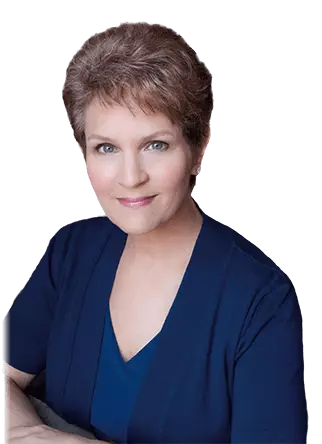One of the key ways to get from where you are to where you want to be is to be crystal clear on your vision for the future – not just in terms of your career, but in all areas of your life. That’s why a part of my Executive Coaching program involves helping senior leaders gain clarity on what they really want their future to look like.
To do this, clients create what I call “A Day in the Life.” As a result of this exercise, clients walk through, then capture in writing, what their ideal day would be like once they have achieved their coaching goals.
I’m sure you’ve heard of visioning exercises similar to this, and maybe you’ve even tried one or two. Perhaps they didn’t work for you, so you’ve decided it’s not effective at all. I hear that often: “I tried visioning, Brenda, but it just doesn’t work.”
That’s not my experience. Countless numbers of clients have seen their visions come to life – in every detail, word for word. So why do some people succeed at visioning while others fail?
I’ve learned through years of working with clients that the reason some people succeed in achieving their visions and some don’t is all about how the vision is crafted. If you don’t create your vision properly, you’ll struggle to turn it into reality. This is key to strengthening your leadership brand and to setting yourself up for even greater success in the future.
Below are the seven most common mistakes I see clients make while in the visioning process. Avoid these, and you’ll be on your way to turning your vision for the future into reality.
The 7 Most Common Visioning Mistakes – and How to Avoid Them
Mistake #1: Creating your vision in future tense, rather than in the present tense.
Words like “I will,” “My life will be,” “I hope to,” or “I anticipate” only create more hope and anticipation. Instead, use phrases like, “I am” and “My job is…” When you create your vision as if it’s already a reality, before you know it, it will be.
Mistake #2: Focusing only on “doing” and ignoring feelings.
Most visions I see reflect what people will “do” in their ideal state – the activities they’ll undertake. But it’s critically important to focus as well on how your vision day makes you feel when you’re experiencing it.
- You don’t want a promotion simply for the sake of a promotion. You want how that promotion makes you feel.
- You don’t want more money just to have those pieces of paper with numbers on them. No, you want money because it helps you feel more secure, gives you a sense of freedom in order to do what you love to do, etc.
So, the key is to focus on what you are feeling when you are living your ideal life. What emotion do you experience when you wake up? When you walk into your office? When you observe your dedicated and capable team doing their jobs with excellence? Add feelings to every step of your ideal vision – it’s a vital part of the process. After all, we are not human “doings,” we are human beings, and we experience our work and life through feelings.
Mistake #3: Talking about others’ feelings but not your own.
When creating visions, don’t fall into the trap of thinking about others’ emotions, such as, “My team feels great” or “The Board is happy with my contributions.” Instead, your vision can reflect how others are showing you how they feel. Do they smile more? Is there more laughter at work? Have you received a congratulatory note from a Board member? Once you’ve defined that, add in how these experiences make you feel.
Mistake #4: Stating your vision with the absence of a negative rather than the presence of a positive.
“I leave work early without feeling guilty” is an example of a vision statement sentence that focuses on the absence of a negative. In this case, you’re trying to avoid the negativity of guilt. Instead, turn things around, and state your vision with the presence of a positive: “I leave work early with a sense of peace, knowing that my team has everything under control.” Here are other examples of negative-versus-positive vision sentences:
- Negative: “I don’t have to micromanage my team.”
- Positive: “My team members handle their tasks expertly and independently.”
- Negative: “I don’t have conflict with my peers.”
- Positive: “Interactions with my peers are harmonious and easy.”
Mistake #5: Only including your business or professional life in your vision, leaving out your personal life.
A great leader is well-rounded, so it’s key to include all the various aspects of your desired life in your vision. What do you want for yourself personally, as well as in your career? Some of my clients, for example, will leave out important personal steps, beginning their day in their vision by going to work. But what about family interactions in the morning before leaving for work, or connecting with friends after work? Be sure to include your life mate/spouse, family, friends, hobbies, charity work, etc. as an integral part of your ideal day.
Mistake #6: Struggling to make your vision truly “ideal.”
Living your ideal reality may seem so far off that it’s hard to even imagine what such a future would be like. I see that in phrases such as “only a few mistakes are made by my direct reports,” or “I start my day reading emails.” Is that what you really believe is “ideal?” Wouldn’t you rather envision no mistakes made and/or starting your day with a reflective walk in the park? Check yourself if you start to make your vision less than perfect. This is your chance to create a future that you truly desire.
Mistake #7: Not stretching your vision enough.
If your vision only brings incremental improvement instead of significant improvement, it’s time to stretch yourself more. Go for the career and life you really want. Make note of everything that has changed in this ideal life, including what you’re doing that’s very different from today, how you relate to others differently, how different work and life feel, and how others relate to you. Do you have your usual work meetings, or does your ideal vision mean you can skip certain meetings? How many hours do you spend at the office? Be specific and stretch yourself.
Make Your Vision Come to Life
You’ve written your vision according to these guidelines above… now what? Here are a few simple starter tips for how to turn your vision into reality:
- Carry your vision around with you at all times. Keep it in your pocket or your purse as a constant reminder of what you are aiming for.
- Read it at least every other day, but don’t just read the words. Take time to let the vision sink in and remember to feel what it’s like to live this, day in and day out.
- Act, react, look, sound, and think as though that visionary life is how your life is now. Live your vision. Embody it 24/7 – now.
If you avoid the seven most common mistakes in crafting your vision and follow the simple tips outlined above, you’ll soon find your vision has turned into your life.

THE FORGOTTEN CHOICE
Discover a little-known decision you make every moment that either holds you back or opens doors to unlimited possibility.

 Brenda Bence is sought after across six continents as a Certified Executive Leadership Coach, internationally recognized branding expert, and the author of 11 award-winning books on leadership, coaching, and branding. A Global Certified Speaking Professional, Brenda is in demand as a top-rated motivational speaker, engaging audiences around the world, both in-person and virtually.
Brenda Bence is sought after across six continents as a Certified Executive Leadership Coach, internationally recognized branding expert, and the author of 11 award-winning books on leadership, coaching, and branding. A Global Certified Speaking Professional, Brenda is in demand as a top-rated motivational speaker, engaging audiences around the world, both in-person and virtually.